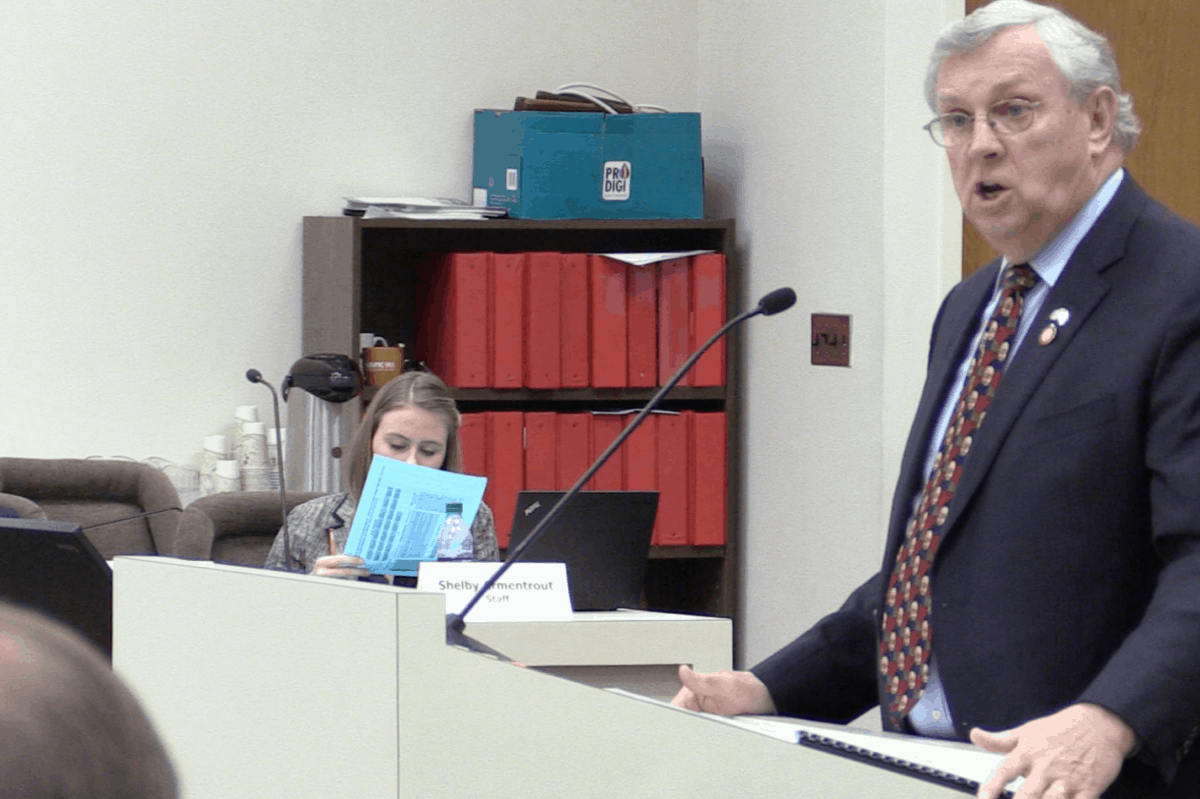

The House K-12 Education Committee considered legislation Tuesday that would create a task force to look at the possibility of changing the way education funds are distributed in the state.
The idea was originally broached in a Joint Legislative Program Evaluation Oversight Committee, which met prior to the long session. The draft legislation that came out of that committee would have formed a task force to consider changing the current funding formula from one that relies on allotments to one that is determined using a weighted-student formula.
During the Education Committee yesterday, the legislation was amended to make it so the task force could consider not only the weighted-student formula but other funding formula options as well.
“That’s all it does is allow the committee to look a little more broadly as well as deeply,” said Committee Co-Chair Rep. Craig Horn, R-Union.
Presently, the state doles out the state education funds using a series of allotments — 37 in total. The allotments are essentially line items. X amount of money for classroom teachers, Y amount of money for school building administration, etc… This is called the resource allocation model.
Under a weighted-student formula, the money would be based on the student. Basically, the state would allot a base amount of money for each student in the state. The arbitrary example given at the November meeting was $7,500 (note: that is not the funding number being proposed, simply a number picked to use in an example).
Now, the distribution of funds changes depending on the type of student. A student with no special needs affords the school $7,500. But let’s say you have a student who is K-3. That student would get an additional .19, or $1,425, of that base of $7,500. If that student has disabilities, he or she would get an additional .98 or $7,350 of that initial $7,500. When all the numbers are added up on that student, the school gets a total of $16,275 for that one student.
Check out our earlier coverage to get a better understanding of how a weighted-student formula would work.
Another amendment considered during the education committee meeting was one that would change the makeup of the proposed task force.
The legislation originally proposed having a task force comprised of nine members of the House and nine members of the Senate. Horn proposed an amendment that reduced the number of House and Senate members by three on each side, so that there would be a total of six House members and six Senate members. The other six seats would become non-voting roles taken up, potentially, by other stakeholders — three chosen by the Senate President Pro Tempore Phil Berger, R-Rockingham, and three chosen by House Speaker Tim Moore, R-Cleveland.
Horn suggested that each chamber could pick two superintendents and one school district Chief Financial Officer, though he told the Education Committee members he was open to other distributions. Another possible example he gave was having each chamber choose one superintendent, one local district CFO, and one member of the district’s County Commissioners. County Commissioners typically contribute local education funds to school districts.
The amendment was ultimately not voted on. Horn wanted to hold the vote until the next K-12 Education Committee so that members could have more time to think on it. But there was a lot of debate as to how the task force should be structured.
Horn was asked how he came to the number of seats on the task force: 18. He said there was no special reason but that the size seemed right.
“We get larger than that, it’s no longer a small committee. It’s a large town,” he said. “There’s no magic to these numbers. The point is to ensure that we have broad representation across the state.”
Rep. Hugh Blackwell, R-Burke, in particular, didn’t think that the task force should include outside stakeholders.
“I think it’s more window dressing than we’re looking for,” Blackwell said of Horn’s amendment. “I don’t think that’s really the best way to get input.”
He recommended the task force be constructed as originally intended, and that stakeholders — educators, superintendents, county commissioners, and the general public — be given the opportunity to testify before the task force and give their opinions.
Horn said he didn’t mean to imply that the task force would not hear from stakeholders beyond those that would potentially be added to the group.
“The advantage I see of adding these other folks to the committee as non-voting members is they’re also in a better position to ask questions, rather than us getting into a debate amongst the public,” he said.
Rep. Bobbie Richardson, D-Franklin, suggested that the task force should also include a chair of a local district school board and PTA as well.
Rep. Pat Hurley, R-Randolph, said she thought stakeholders needed to be involved one way or the other.
“I feel like we need the stakeholders, absolutely, every one of them. Whether it’s 18 legislators or whether it’s mixed up, I’m OK with either one, but I feel like we definitely need the public hearing,” Hurley said.
Horn agreed that a public hearing was needed. He closed the meeting by suggesting to continue the discussion and added some final thoughts.
“I’m going to suggest we continue this, one more meeting, give you all a chance to think about it,” Horn said. “Understand we can’t be all things to all people. Understand that this bill requires us to make a decision, not another plan or study. And perhaps the best way to proceed is to leave the bill just the way it is with the single amendment in place.”
A companion bill has also been filed in the Senate.
See video of the full committee meeting below.


